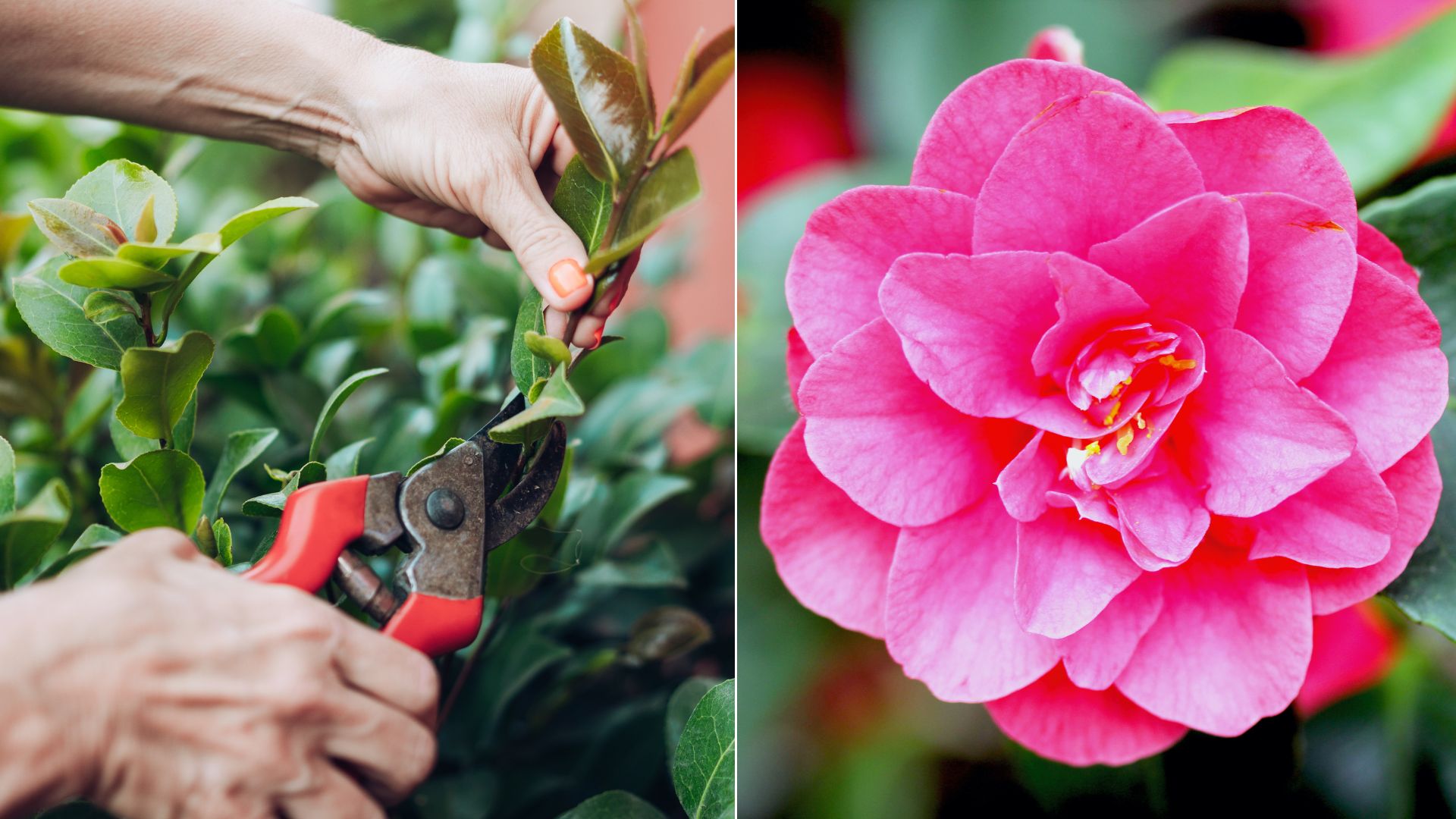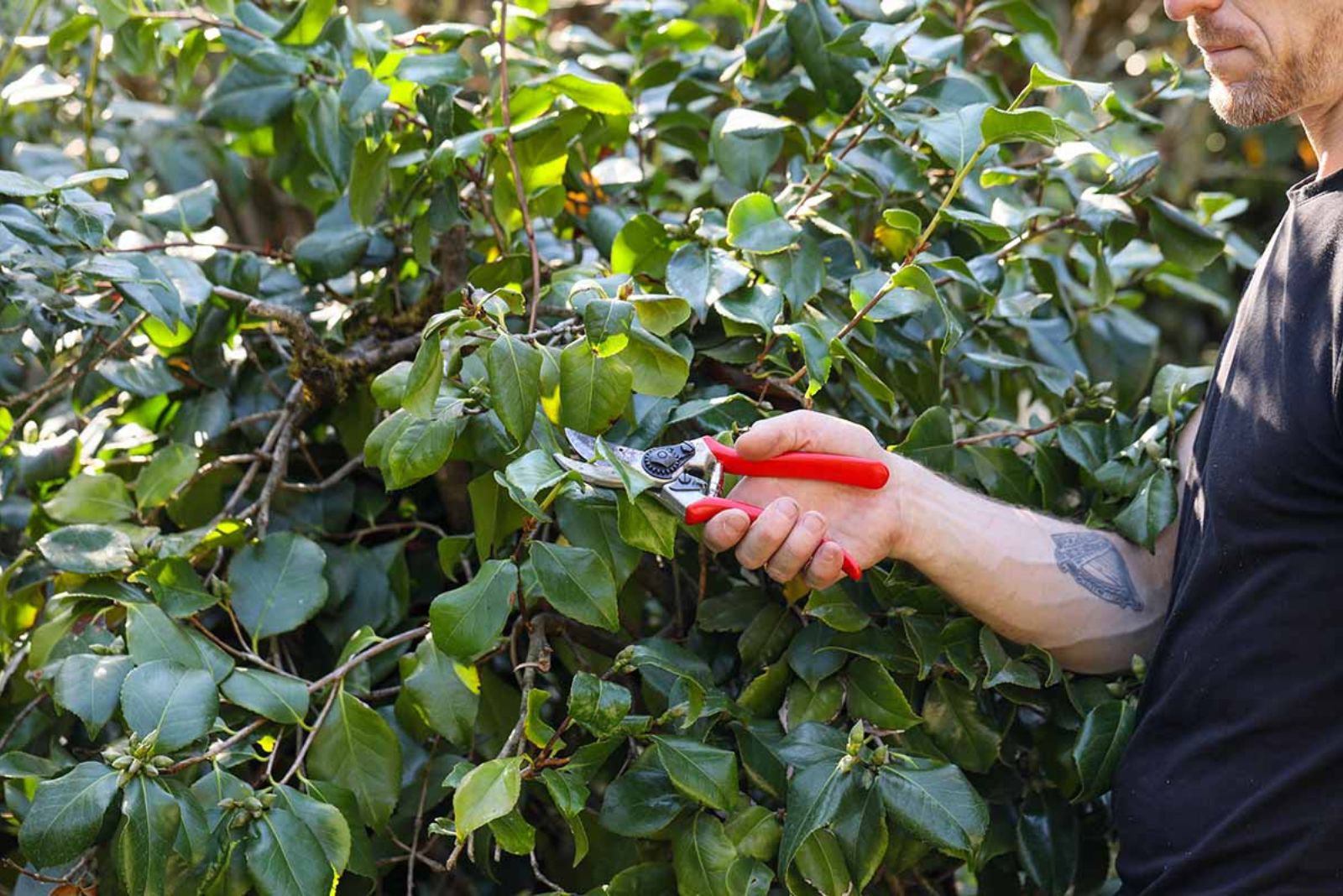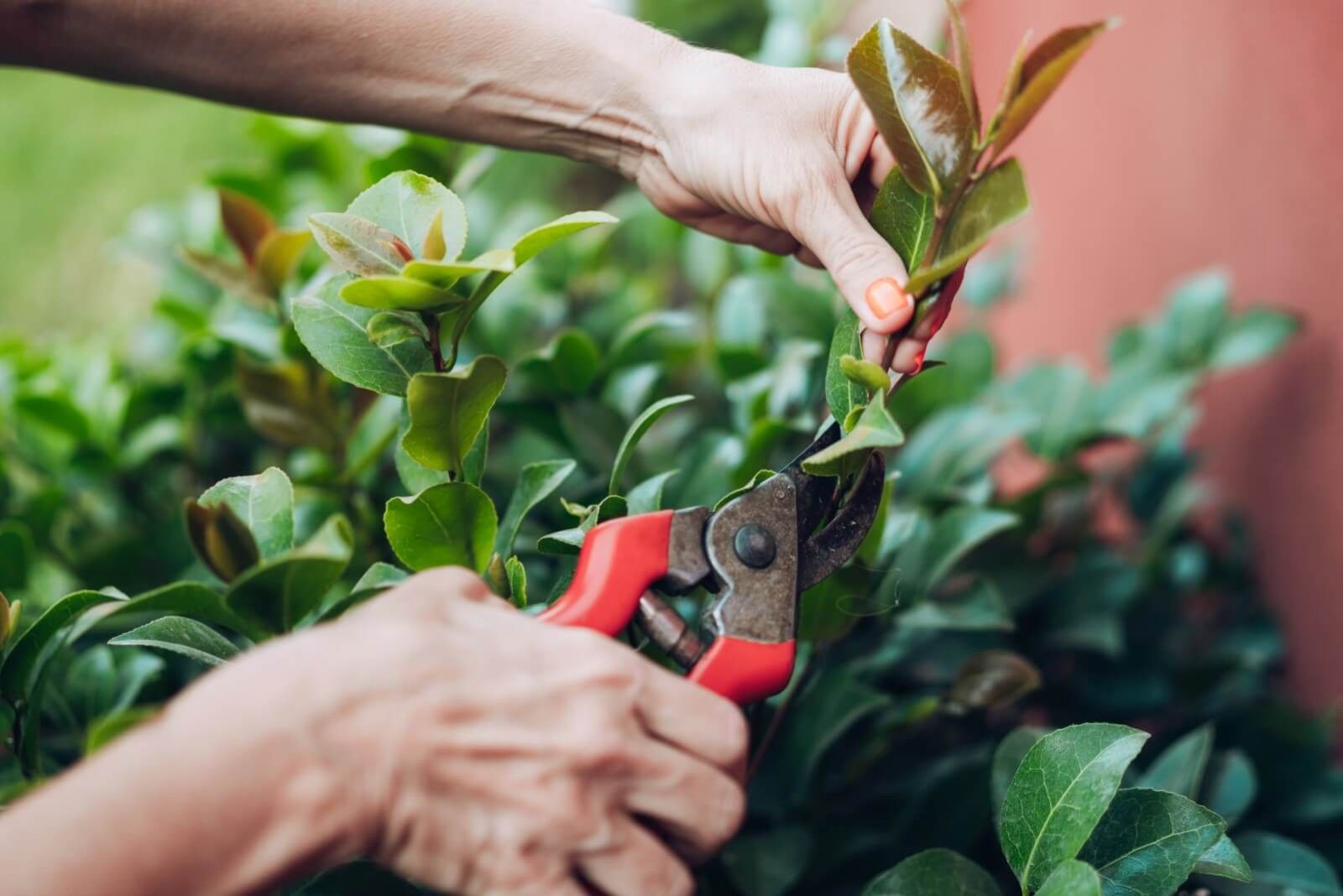Those who are lucky enough to live in warmer US climates can enjoy the captivating appearance of camellia plants year after year.
Colorful blossoms can appear anytime from fall to spring, making this flowering plant truly unique.
But if you want to make the best out of your camellias, you should include pruning on your to-do list.
In this article, I’ll show you how to prune your camellias and explain why you shouldn’t skip this gardening task!
Let’s get started!
Best Way To Prune Camellias
Before you start pruning these fascinating plants, you should prepare your tools. The type of pruning tool mainly depends on your preferences, so it can be a knife, pruning shears, or hand cutters.
However, make sure the tool you choose is sharp to avoid breaking and damaging your precious camellias. Remember that any open wound is highly susceptible to diseases, so you should be very careful.
The next thing to do is inspect your camellia and look for sections that are overgrown, weak, or dead. Take your pruning tools and cut off these sections as close to their base as possible.
If any part of your camellia plant is infected or has a pest infestation, do not leave it on the plant.
Additionally, make sure to sanitize your pruning tools before each cut to prevent infection or infestation from spreading to healthy parts of your camellia.
If you have a specific shape in mind for this winter-flowering shrub, feel free to remove any insignificant sections.
When To Prune Camellias
It’s essential to know when to prune these plants to avoid creating any unnecessary issues.
First, let’s discuss the season. Ideally, you should prune these plants in spring when the flowering season ends. This way, you’ll avoid interfering with its natural blooming cycle.
There’s no need to prune your camellias every year! These plants will benefit from pruning every couple of years. If you prune too often for reshaping purposes, you can significantly jeopardize its overall health.
Your camellia may become too weak from constant pruning, which will result in high susceptibility to diseases and in some cases even death.
The only exception to this pruning frequency is if you notice any damaged, discolored, or dead sections on your camellias. In this case, you should remove them no matter the season or if there has been only a year since the last pruning.
Why Prune Your Camellias?
The only question that remains unanswered is whether camellias really need pruning. There are two main benefits of pruning this flowering plant.
First, pruning encourages your camellia to develop healthily, and second, it prevents diseases and mold development.
Remember that dying branches that can’t be fixed are still using the nutrients from your plant and make it weaker as a result. Once you remove these plant parts, you help your camellia redirect its energy to the development of healthy sections only.
And guess what that means? An abundance of blossoms during the flowering season and more healthy branches!
As you may know, camellias make an excellent flowering bush for privacy because of its compact growth. But the tricky part about this is that the base of the plant often suffers from poor airflow because of densely packed foliage.
Both sun and air can’t reach these plant parts, which creates a perfect environment for mold and various diseases. The best way to prevent this issue is to prune some inner sections of your camellia.
Sun will reach the remaining plant parts, dry out the base, and in that way protect it from diseases.
Last but not least, this gardening technique will prevent a phenomenon in these plants known as dieback. If your camellia has dead limbs, you should not leave them on the plant because they can affect the plant’s overall health and cause it to die back.
Every grower agrees that captivating camellias aren’t hard to maintain. But if you want a healthy plant that will produce an abundance of blossoms, you shouldn’t skip pruning. Just follow our tips and enjoy happy and healthy camellias for many years to come!



